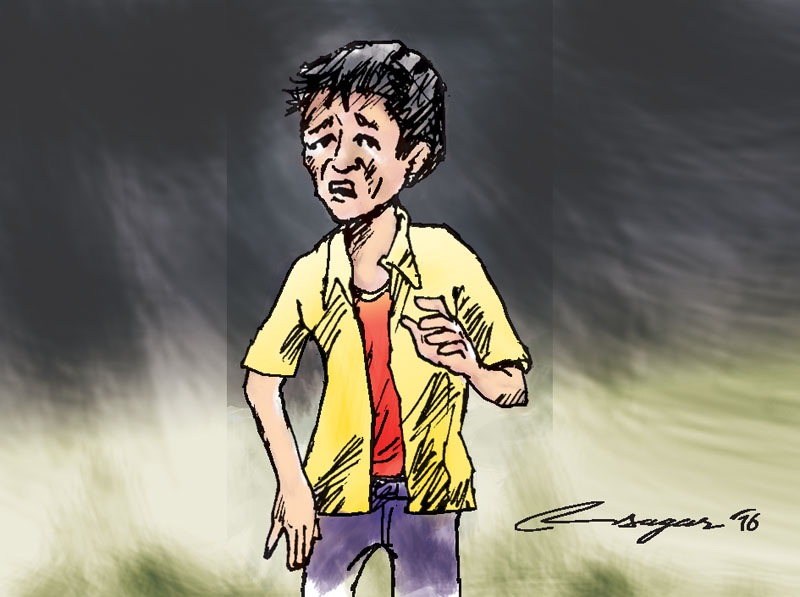Scourge of rotavirus Ways to stop it
Diarrhea is one of the major public health problems among children less than five years of age in Nepal. Among diarrheal pathogens, rotavirus is the most frequent cause of hospitalization in young children in both the inpatient and OPD
This month, hundreds of thousands of children will get access to rotavirus vaccines in India with the start of a national introduction that marks Asia’s largest to date. But over 90 million children around the world still lack access—including hundreds of thousands of children here in Nepal. Rotavirus, the most common cause of severe, deadly diarrhea, claims the lives of more than 200,000 children each year globally, and hospitalizes hundreds of thousands more. This one virus is responsible for nearly 40 percent of all diarrhea hospitalizations. And a recent multi-country study showed that children who developed moderate to severe diarrhea had an 8 and a half times higher risk of dying in the subsequent two months compared to children who did not suffer from diarrhea.
Diarrhea is one of the major public health problems among children less than five years of age in Nepal. Among diarrheal pathogens, rotavirus is the most frequent cause of hospitalization in young children in both the inpatient and outpatient departments. Rotavirus infection occurs all year round but peaks during the fall and winter months. We know how to stop rotavirus illnesses and deaths, and we have the tools today to do it. Global health experts recommend a comprehensive approach focused on preventing illness in the first place and treating children if they do become sick.
Mild to moderate cases of diarrhea can be treated with oral rehydration solution (ORS)—a simple mixture containing sugar, salt and safe water—and zinc supplements. More severe cases require intravenous fluids and urgent medical care. But though inexpensive and effective, ORS coverage is only about 30 percent in many of the places where the most diarrhea deaths occur. Hospitalization, too, is often out of reach. And while improvements in hygiene, sanitation and drinking water are important to prevent diarrhea in general, they cannot stop the spread of rotavirus. That’s why preventing rotavirus infection is essential.
Vaccination is the best tool available today to protect children from rotavirus. These vaccines are improving health, reducing healthcare costs and saving lives today in countries where they are in use.
The World Health Organization has recommended that every country introduce rotavirus vaccines into national immunization programs. So far, 80 countries have introduced the vaccines, but not enough countries in Asia or Africa have taken action—the regions where the burden is highest. The ROTA Council, a global body of scientific experts on rotavirus, strongly agrees with the WHO recommendation. In addition, to accelerate the introduction of lifesaving, health-improving rotavirus vaccines, the ROTA Council recommends that key stakeholders in countries where these vaccines have not yet been introduced take action in the following areas:
In conjunction with the introduction of rotavirus vaccine, countries should work with WHO, UNICEF and other partners working on diarrheal disease to plan and implement a comprehensive set of interventions to reduce illnesses and deaths caused by diarrheal disease, consistent with the Global Action Plan for the Prevention and Control of Pneumonia and Diarrhea (GAPPD). Gavi-eligible countries that have not yet introduced rotavirus vaccines should apply to Gavi, the Vaccine Alliance for new vaccine support for rotavirus vaccines as soon as possible.
National governments and funding agencies should continue to support the research and development of new, low-cost rotavirus vaccines. Manufacturers in low- and middle-income countries have demonstrated the ability to develop and license low-cost rotavirus vaccines.
Global health entities—such as UNICEF, WHO and Gavi—and non-governmental organizations influential in vaccine programs—such as Médecins Sans Frontières and Save the Children—should focus on efforts to ensure prices paid for rotavirus vaccines reflect true manufacturing costs, provide reasonable returns on manufacturers’ investment and take into account an individual country’s ability to pay.
National governments, global health entities, funding agencies, manufacturers and other stakeholders should facilitate the development of new; live oral rotavirus vaccines that address supply shortages in Gavi-eligible and low- and middle-income countries.
These new vaccines should also address implementation challenges such as cold chain capacity, volume of administration and storage, delivery systems, safety concerns and cultural sensitivity.
Nepal’s immunization program has expanded in recent years, with new shots of inactivated polio vaccine and pneumococcal conjugate vaccine, and an additional shot of measles rubella.
In 2016, it’s unconscionable that children are still suffering from diseases we have the knowledge and tools to prevent. It’s time to protect all children, everywhere, from the scourge of rotavirus.
Eighty countries, including India, have taken laudable steps to introduce and scale up the use of rotavirus vaccines. But millions more children await. It’s time to take action.
Dr. Shrestha is professor and Head of Department of Paediatrics, TU Teaching Hospital and Dr Santosham is professor of international health and pediatrics at the Johns Hopkins University






